After we have already introduced you to some regional cuisines (for example Romanian or Estonian), we take you to sunny Croatia, where we want to introduce you to the Croatian cuisine. However, it is not possible to speak of one single Croatian cuisine, as the country is too diverse due to its history and its location between the Adriatic Sea and the Dinaric Alps. Therefore, Croatian cuisine has significant regional differences. In the north it is quite meat-heavy, while on the coast it is Mediterranean and includes many fish dishes.
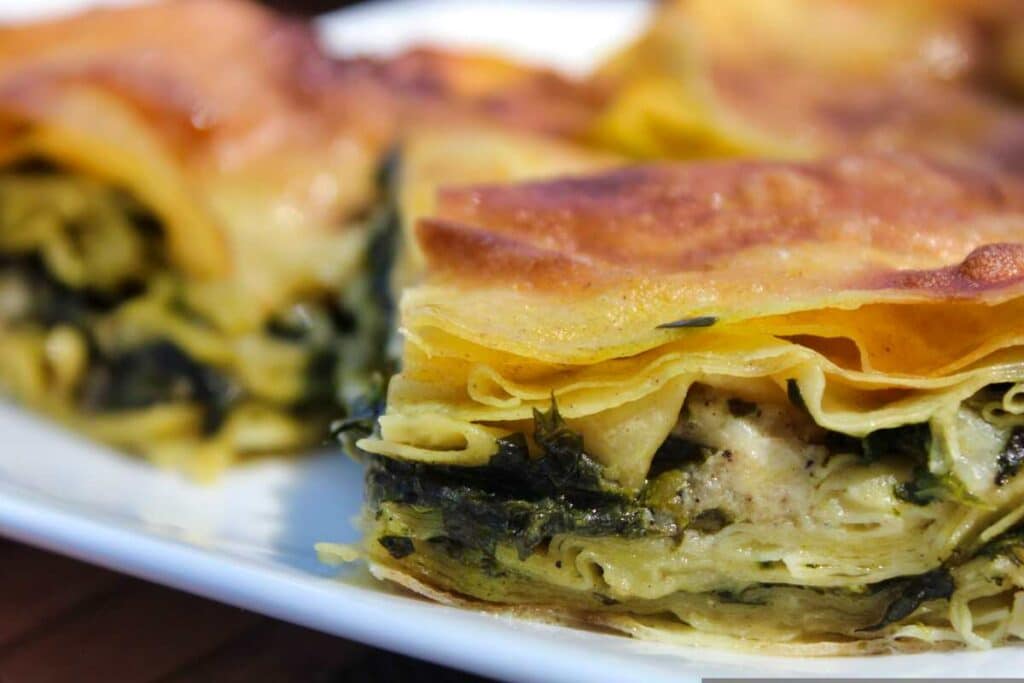
Burek
Burek is a popular puff pastry dish with a cheese, spinach or meat filling, derived from the Turkish börek, which can be bought on almost every corner both as a snack and as a main course. Burek is not only very popular in Croatia, but also in other Balkan countries such as Serbia, Bosnia and Herzegovina (here, for example, only a burek with meat filling is also called burek) and Montenegro.
There are regional differences in the preparation and fillings in these countries. The dish also differs in shape, sometimes looking like a kind of sheet cake and sometimes being displayed in snail form in bakeries and snack bars.
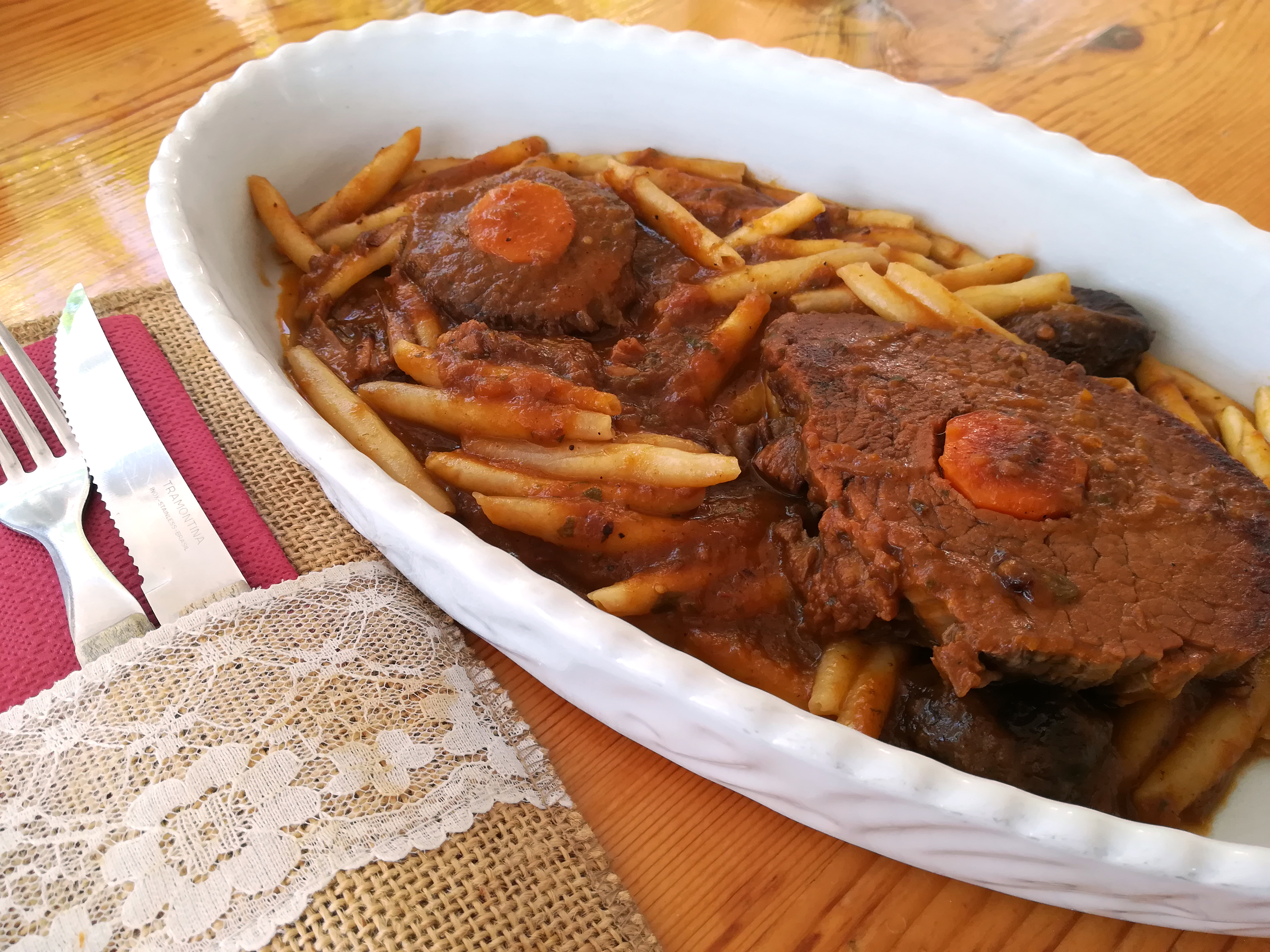
Pašticada
You should bring plenty of appetite for the pašticada, a dish similar to goulash that is popular throughout the country, made from meat, wine, figs, garlic, bacon and other ingredients, which is often served with pasta and originally comes from Dalmatia. The name of the dish is derived from the Italian word “stufato”, which means “stew”, and that is exactly what makes pašticada so special.
It is slowly braised in a delicious sauce of wine, vinegar and spices until the meat is tender and the flavors have developed perfectly. This marinade gives the pašticada its characteristic flavor and makes the meat incredibly tender. Pašticada is a dish that is often prepared for special occasions and family celebrations in Croatia.
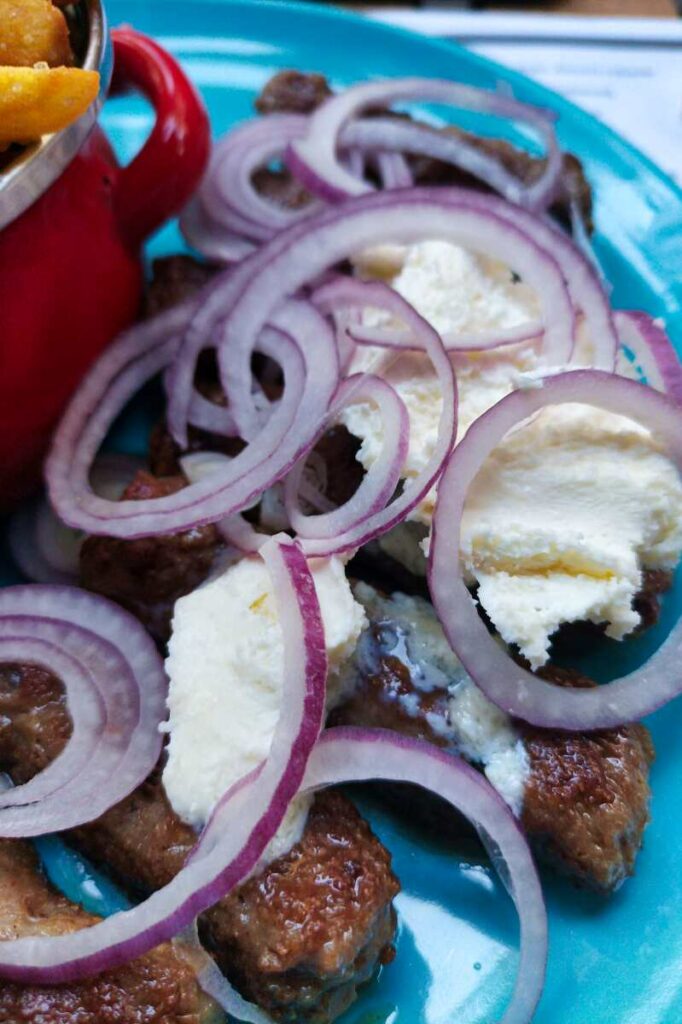
Ćevapčići
Few dishes are more representative of Croatian cuisine than Ćevapčići. The small minced meat rolls are an integral part of the local cuisine and are often served as street food, in restaurants and at family celebrations. The main ingredient of Ćevapčići is usually a mixture of beef and lamb, although pork or veal can also be used.
The meat is mixed with onions, garlic and various spices such as paprika, pepper and marjoram to create the characteristic flavor. The minced meat mixture is then formed into small sausages or rolls and fried on a grill or in a pan until golden brown.
They are usually grilled on charcoal grills or open fires, which gives them an irresistible smoky flavor. The characteristic pattern of grill stripes on the rolls gives them not only an attractive appearance, but also a special taste. Traditionally Ćevapčići are served with a flat bread and sprinkled with onions. By the way, you can find a not quite serious sung recipe by the Bavarian folk musician Franzl Lang (with earworm guarantee!) here.
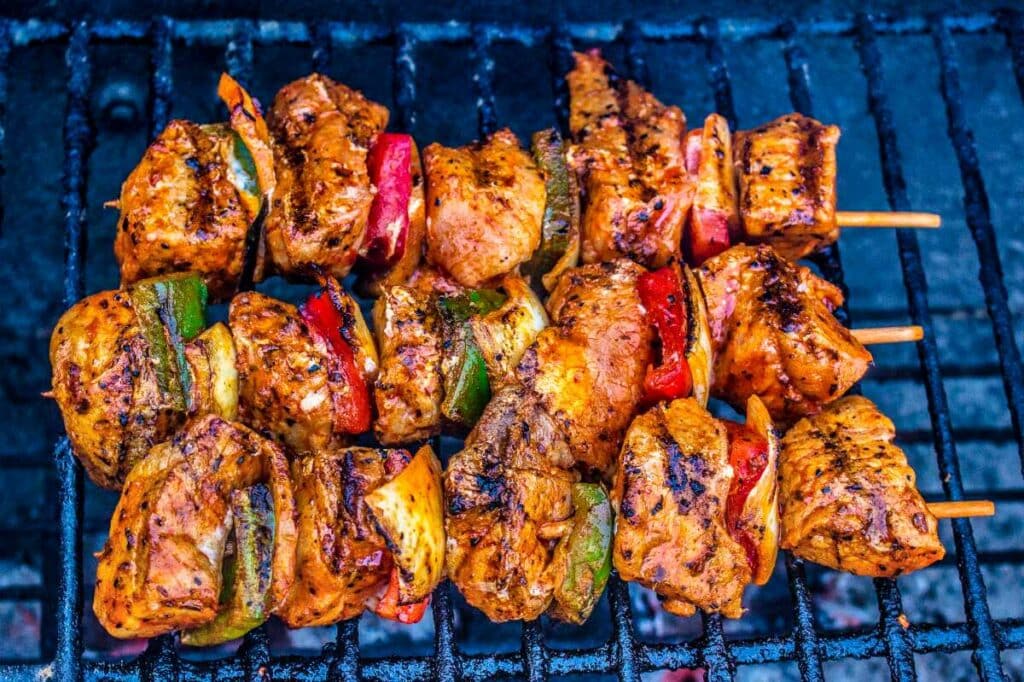
Ražniči
Besides Ćevapčići, there is another (and by no means the only) meat dish – Ražniči. Ražniči are skewers of marinated meat prepared on an open fire or grill. The dish originated in Croatian folk cuisine, but is also widely used in many other Balkan countries. The main ingredient of Ražniči is usually pork or chicken, although beef and lamb are occasionally used. The meat is cut into small pieces and put in a delicious marinade of olive oil, garlic, paprika, vinegar and spices. This marinade gives the Ražniči their characteristic taste and makes the meat tender and juicy. The garnishes are similar to those of Ćevapčići.
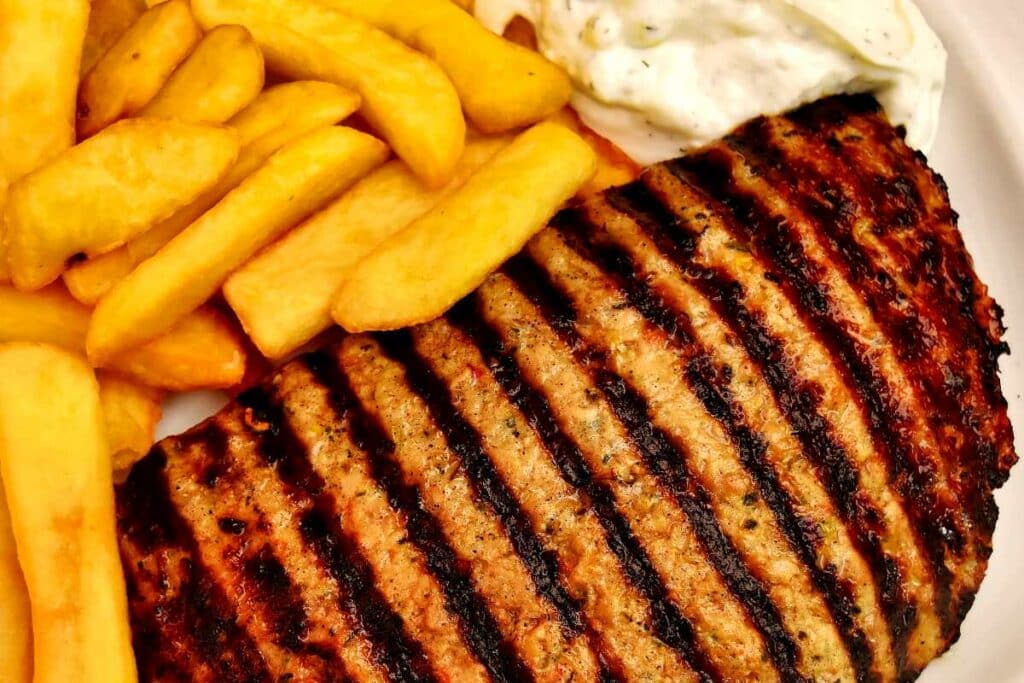
Pljeskavica
Pljeskavica is also something for meat lovers: the large minced meat patties are usually served with fries or ajvar and are often filled with cheese (my absolute favorite version), with which fries also go well. Actually, Pljeskavica comes from Serbia, but it is also known and loved in Croatia. Fry the meat patties on a well-heated grill or skillet until golden brown and cooked through. Turn them often during grilling to ensure they are cooked evenly and develop a crispy crust.
Ajvar
The aforementioned ajvar, which can now also be found in our supermarkets, is served with many dishes. Every family has its own recipe and opinions are still divided on the question of whether eggplants belong in paprika paste. In addition to peppers (and possibly eggplants), garlic, oil and spices are also added to the paste.
The slightly smoky flavor comes from the fact that the peppers or eggplants are grilled or baked beforehand. Ajvar is available in various degrees of spiciness, and those who like it spicier can add chili peppers during the production process. The great thing about ajvar is that it can be used in so many different ways: whether as a spread, as a dip or as a side dish with pljeskavica or ražnjići – ajvar simply always works!
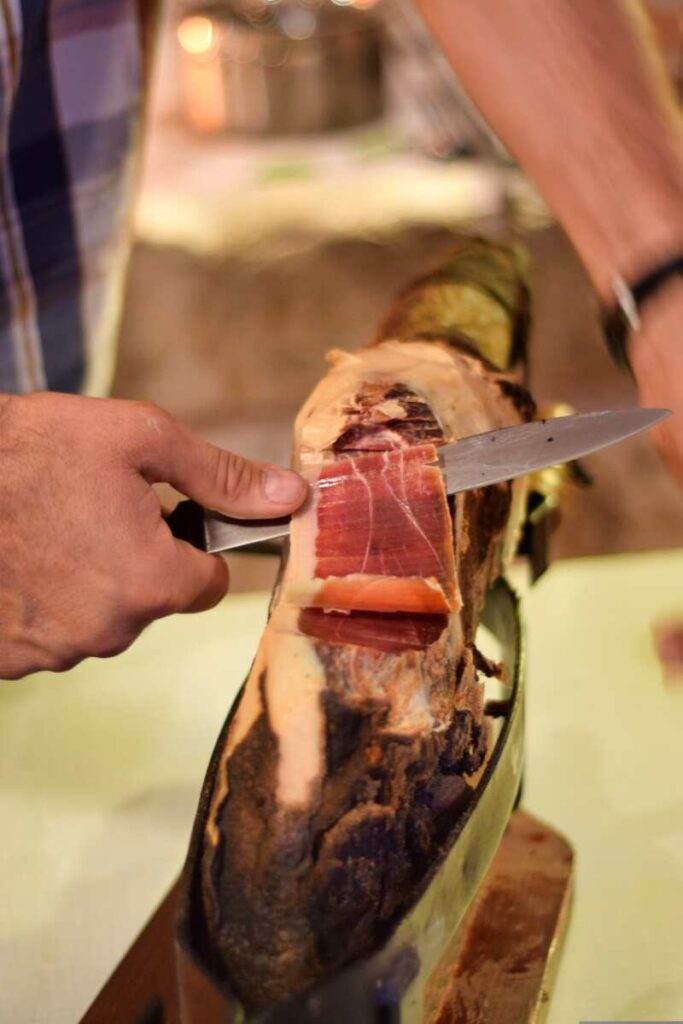
Pršut
As a kind of Croatian tapa, the hardly pronounceable pršut is nothing other than dried ham, which is stored for a long time and is popular especially on the coast. The production of pršut is an art that is passed down from generation to generation. The quality and taste may vary depending on the place of production and the ingredients used. The ham has similarities to Italian prosciutto or Spanish serrano ham, but is often saltier.
Kulen
Kulen is a traditional type of sausage that is famous in Croatia, especially in the Slavonia region. Kulen is characterized by its spicy and hot note and is a festive component of many Croatian celebrations and feasts (especially at Easter). The main ingredient of kulen is usually lean pork, often from the leg, which is finely minced and seasoned with paprika, garlic, pepper and other spices.
After the meat has been seasoned, it is stuffed into pig casings to obtain the characteristic sausage shape. The sausages are then dried and matured, usually for several months, sometimes even over a year. During this time, the meat dries and the flavors intensify.
Pag cheese
The famous Pag cheese (Paški sir) comes from the island of the same name and is a relatively salty, spicy sheep cheese. It is coated by a thick yellow crust, which is the result of drying on the Adriatic coast. The sea salt in the air and on the pasture also contributes to the distinctive taste of Pag cheese. Pag cheese is often offered in various degrees of ripeness, from mild to aged, with the aged versions having a more intense aroma and a stronger texture.
Palačinke
Palačinke (pancakes) are an integral part of Croatian cuisine and almost a national treasure. The basic ingredients for Palačinke are flour, eggs, milk, a pinch of salt and sometimes a little sugar. These ingredients are mixed together to form a thin batter, which is then spread out in a pan with a little oil or butter.
The dough is fried evenly until golden brown and then filled or topped according to preference. Palačinke are more of a sumptuous dessert than a main meal. The sweet varieties predominate and have a lot to offer in terms of calories and sugar.
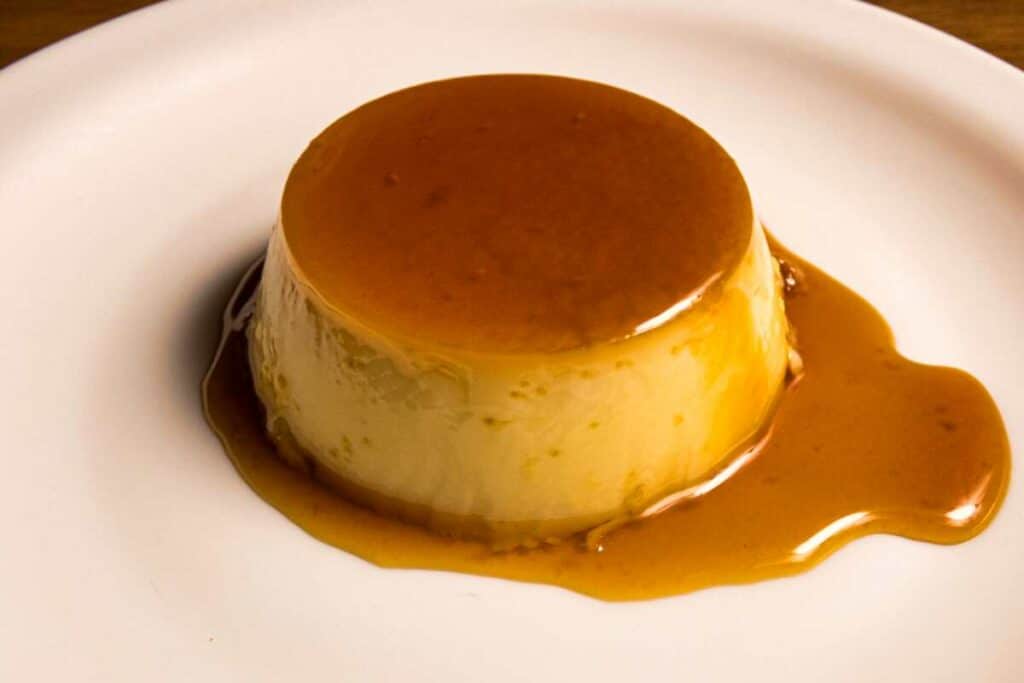
Rožata
The Rožata has its origins in Dalmatia. It is a creamy, flan-like dessert that is often topped with caramel and has a distinctive taste. The main ingredients of Rožata are milk, sugar, egg yolk and rose liqueur, which gives the dessert its name (Rožata is derived from the Italian word “rosata”).
The rose liqueur Rozulin or Rozalin gives Rožata a delicate and slightly floral aroma that sets it apart from other desserts. Lemon zest and vanilla can also be added to refine the taste. After cooking, rožata is served in a caramel sauce.
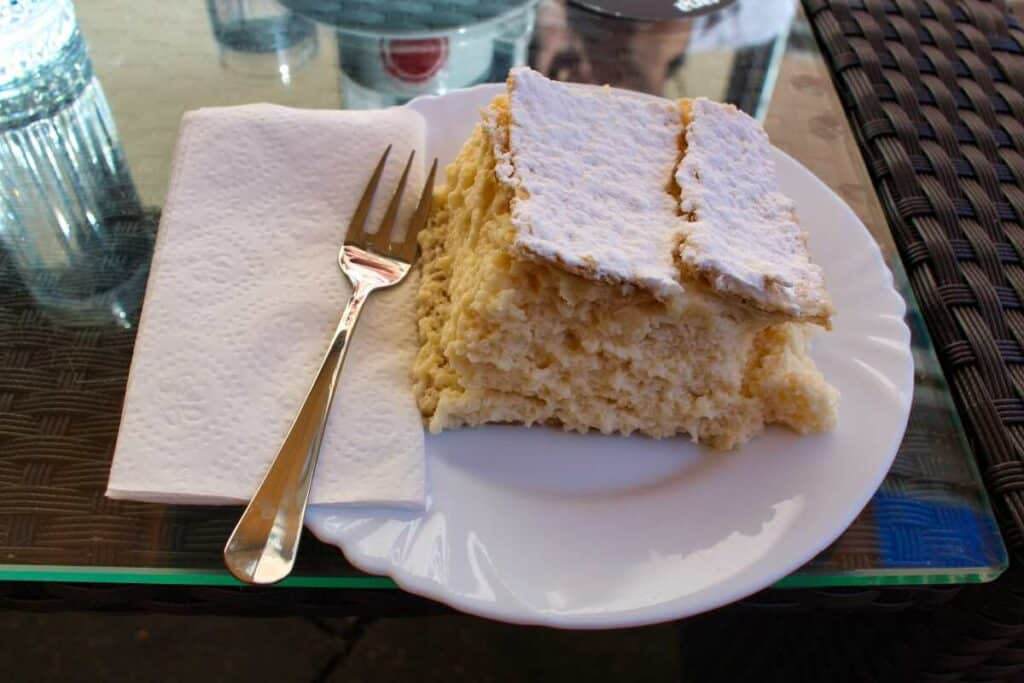
Kremšnita
Kremšnita (“cream slice”) is known all over the country, but it is especially famous in Samobor. Here it is brought to the plate wonderfully fluffy. The recipes are closely guarded, but all of them have in common a yellow color of the cream, framed by a thin layer of dough and sprinkled with powdered sugar.
Paprenjak
A specialty that Croats are very proud of and that makes a great souvenir is paprenjak, a gingerbread (the name “paprenjak” is derived from “papar”, which means “pepper” in Croatian) with honey in the form of a cookie, which is especially popular during the Christmas season. The main ingredients of paprenjak are flour, sugar, honey, ground black pepper and various spices such as cinnamon, cloves and nutmeg.
The cookies often have an embossed pattern on the surface that gives them a traditional look. Paprenjak making is a traditional art in Croatia, and many families have their own recipes and methods to make these cookies. Recipe variations may vary slightly by region, but the distinctive taste of paprenjak (a blend of sweet and slightly spicy) remains.
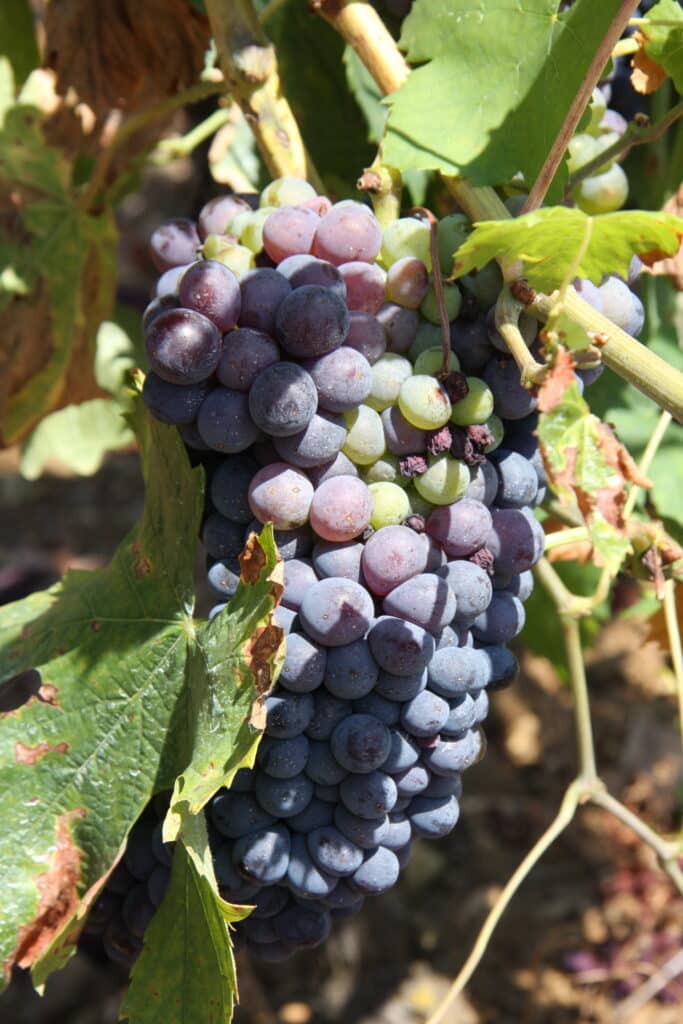
Croatian drinks
Of course, the Croatian cuisine knows not only delicious Croatian dishes, but also numerous drinks!
Croatian wine is rarely found in supermarktes in Western Europe, yet it has an excellent reputation. Particularly famous is the Zinfandel (crljenak), originally from Croatia. But varieties such as Graševina, Malvazija, Plavac Mali and Dingač are also popular.
Croatian beer is also little known elsewhere (except the neighbouring countries), but very tasty. In addition to the large breweries Ožujsko (the oldest brewery in the country, from Zagreb) and Karlovačko (from Karlovac), there are now a number of microbreweries. Croatians are quite experimental when it comes to beer, which is why they also like to drink mixed drinks that are not available here, for example beer with elderberry syrup.
After a hearty meal, a rakija is not to be missed. The fruit brandy is available in different degrees of volume, which can provide sometimes for a sharp, sometimes for a sweet taste. The most famous rakija is Šljivovica, made from plums.
Book tips Croatian cuisine
You got hungry and want to recreate the delicious Croatian dishes? Then our book tips are just right for you!
- Kuvačić, Ino (Author)
Just browsing through this book makes your mouth water in view of the great photos, and there is also a lot of interesting background information on the dishes.
- Cookbooks, Simple (Author)
Visually more spartan, but no less well written comes this book that has opted for a subdivision of dishes by region, so the Croatian cuisine is also sufficiently well appreciated here.
How did you like this article about Croatian cuisine? Feel free to write us a comment!

